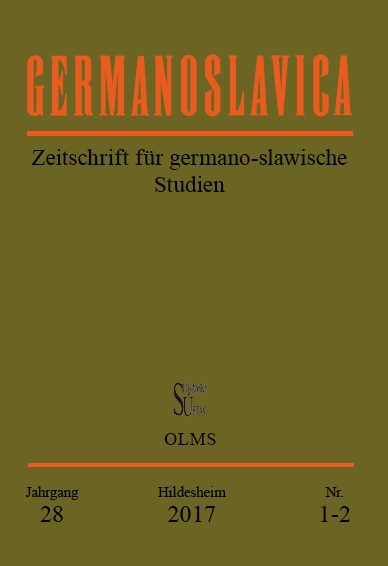Der deutsch-polnische Bevölkerungstransfer der Jahre
1944 bis 1950 als Gegenstand transnationaler
Literaturwissenschaft
The German-Polish Population Transfer of the Years 1944-1950 as an Object of Transnational Literary Studies
Postulates of a Postcolonial Heuristics
Author(s): Dirk UffelmanSubject(s): Theory of Literature
Published by: AV ČR - Akademie věd České republiky - Slovanský ústav and Euroslavica
Keywords: literature; Germany; Poland;forced population transfer;
Summary/Abstract: This paper explores the heuristic potential of transnational and postcolonial approaches to German and Polish literature on the forced population transfer from and to the former German Eastern borderlands in the years 1944-1950. Spatial and temporal perspectives intersect here: the forced population transfer is viewed as a process in time which encompassed periods of coexistence between Germans, Poles, and “Russians” (the Red Army). While acknowledging the processuality, however, regional particularities of the periods of coexistence, relocation, expulsion, and escape must be considered as well. The paper discusses the consequences which arise from the aforementioned perspectives for the (a)symmetries that can be found in German and Polish literature on the population transfer. Contrary to existing research, this article tests a hypothesis about symmetries between the two literatures, both in their devices of othering and in their historical colonization analogies. This finding of symmetricality in hetero-stereotyping and “colonial” memory politics is contrasted with a diagnosis of asymmetry concerning the role of the Third, be this the local “inbetweeners” such as Kashubians, Silesians, and Masurians, or a “tangential Third,” i.e. representatives of the Red Army, that complicate the only seemingly binary German-Polish confrontations.
Journal: Germanoslavica
- Issue Year: XXVIII/2017
- Issue No: 1-2
- Page Range: 39-53
- Page Count: 15
- Language: German

